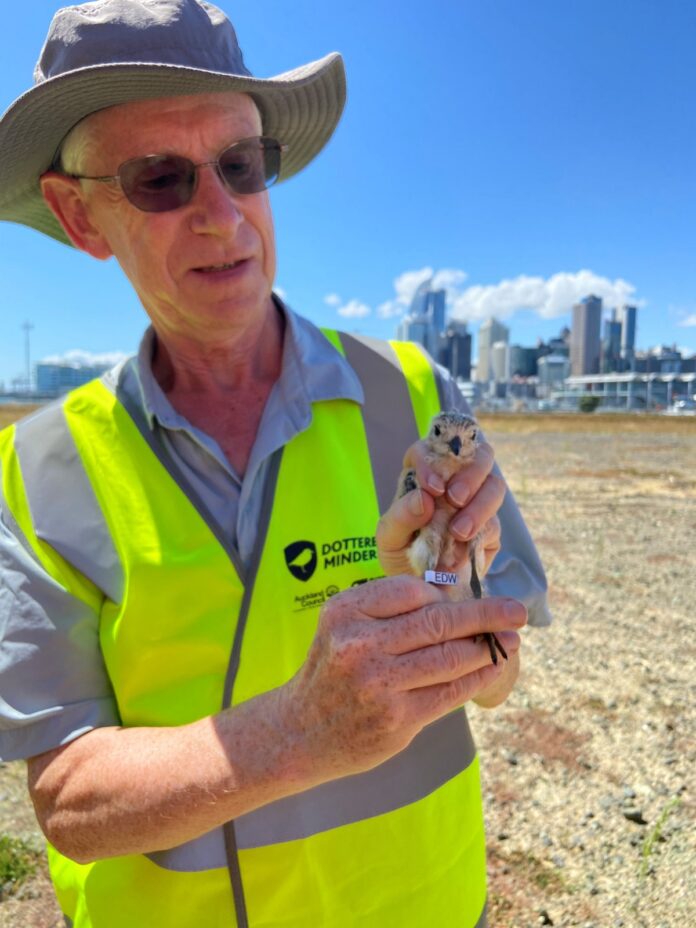Source: Auckland Council
Their home is on some of Auckland’s most expensive freehold real estate, with multimillion-dollar views and mortgage-free.
But these homeowners don’t have flashy apartments but rather enjoy the simplicity of the land they’ve made their home.
Two pairs of Northern New Zealand dotterels have taken up residence at Wynyard Point on land formerly occupied by the old tank farm, a site they’ve judged a prime nesting habitat. It’s providing open space and little to no vegetation for their predators to hide in and an area they’ve been attempting to breed on for the last six years.
Dotterels are not known for industrious nest building but rather rely on the camouflage of the stones and ground cover to deposit their eggs and these two pairs have produced four chicks.
John Stewart and his band of volunteer dotterel minders have been monitoring the site since August 2021. When the opportunity arose to ‘tag’ these chicks for research, a coordinated effort from Auckland Council, 4Sight Consulting and Birds NZ secured a permit from DOC to capture the chicks and ‘tag’ for identification.
Coloured ELFs (engraved leg flags) with a unique three-letter code were used – hence EDW for EDWard – were fitted before they fledged and will be visible via camera or binoculars.
“Little is known about the movement of these birds; many winter-over at Omaha Beach where a shell bank provides a perfect feeding ground. Approximately 13 per cent of the Northern New Zealand dotterel are non-beach breeders and whether their offspring too become non-beach breeders and return to the same place to breed is unknown,” says Ben Paris, Auckland Council’s Senior Conservation Advisor.
“Tagging EDWard and his friends will allow us and the public when they sight one of these tagged birds, to let us know their whereabouts so we can form some pattern to their behaviour, particularly those that nest in the urban environment. We still don’t have the knowledge as to whether these birds choose more open beach living than urban developments,” Ben adds.
The chicks were corralled into low mist netting so as not to distress them, quickly caught, measured, banded with a flag, and released.
Daniel Ahern of 4Sight Consulting first noticed the birds when they were swooped and saw broken wing displays aimed at deterring predators from the chicks. He’s been working with Panuku and Shell NZ to look after these new tenants and keep them safe after they appeared on the site.
The species has been ‘at-risk’ for many years but is now in the ‘recovering’ category as defined by DOC classification.
It is hoped bird watchers and the public will be able to notice EDWard and his leg flagged mates and tell Auckland Council where these birds turn up next.



